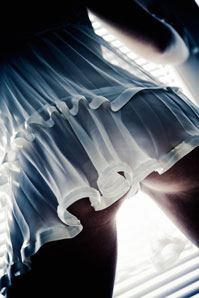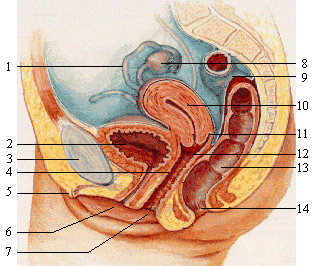 Don’t despair if your girlfriend doesn’t ejaculate. There is still hope…. Despite locker room tales of female ejaculation, it can actually be quite rare. It is said that not all women ejaculate and that even those who do may only do it once ever, but that is simply not true. In fact all women are cable of female ejaculation.
Don’t despair if your girlfriend doesn’t ejaculate. There is still hope…. Despite locker room tales of female ejaculation, it can actually be quite rare. It is said that not all women ejaculate and that even those who do may only do it once ever, but that is simply not true. In fact all women are cable of female ejaculation.
For those women who do, the amount of liquid that spurts out is normally less than what would fit in a juice glass. However, some women – or their partners — have reported that they ejaculate fluids ranging from a few drops to the size of a puddle.
Oftentimes when this happens to a woman for the first time, she is mortified thinking that it is the release of urine, which, of course, it is not. While it is not unheard of for a tiny bit of urine to leak out during intercourse, it doesn’t leak out during orgasm, which is when this liquid appears. The substance is believed to come from glands that are similar to a man’s prostate. Be quick to reassure your partner that female ejaculation does exist. Another fact you might point out is that if it were urine, it would smell like urine. The fluid that comes with the orgasm does not smell this way.
It is thought that female ejaculation – which has been called she-jaculation — is actually the release of fluids from the Skene’s glands, which are in the urethra. This ties in neatly to some theories that stimulation of a woman’s G Spot leads to female ejaculation.
In 1950, a German doctor, Ernst Grafenber published an article about a particularly sensitive spot within a woman’s vagina that could be stimulated to produce orgasms. The G Spot was named after this doctor. The G Spot is believed to be either a button or a ridge or rough patch of tissue deep within the vaginal wall that becomes engorged during stimulation and causes an orgasm. Grafenber believed that when this spot was stimulated it was actually putting pleasurable pressure on the urethra – used to urinate – and that this is what caused engorging and orgasm.
Based on this scientific theory, it makes perfect sense that female ejaculation could in fact be caused by stimulation of the Skene’s glands within the urethra.
One study of women who ejaculate showed that the fluid contained a protein that is also produced by a man’s prostrate. This might mean that some women contain something near their urethra that is similar to the male prostrate gland – this for lack of a better term could be a female prostrate gland. In addition, research shows that this same protein found in fluids during female ejaculation is also the same protein found in semen when men ejaculate.
Sadly, there are few studies in this area. One study of more than 400 women could not find one woman who ejaculated during orgasm. Despite this, enough women and men have experienced female ejaculation first hand that claim it exists.
 Although many aspects of the female orgasm have been a mystery for hundreds, if not thousands of years, there have been a lot of references to it throughout history and literature. Greek and Latin literature has its fair share of sexual innuendos and blatant references. Ovid’s Metamorphoses, in Book III, talks about women having orgasms. Female orgasm and sex continues through the Homoeroticism and Romanticism ages. Percy Bysshe Shelley used the metaphor “no life can equal such a death” for an orgasm. He wrote the poem titled “The Boat on the Serchio”, which is still considered by many to be the “grandest portrayal of orgasm in literature”, as stated in John Lauritsen’s book “Hellenism and Homoeroticism in Shelley and his Circle.” Even William Shakespeare talks about orgasm in his works.
Although many aspects of the female orgasm have been a mystery for hundreds, if not thousands of years, there have been a lot of references to it throughout history and literature. Greek and Latin literature has its fair share of sexual innuendos and blatant references. Ovid’s Metamorphoses, in Book III, talks about women having orgasms. Female orgasm and sex continues through the Homoeroticism and Romanticism ages. Percy Bysshe Shelley used the metaphor “no life can equal such a death” for an orgasm. He wrote the poem titled “The Boat on the Serchio”, which is still considered by many to be the “grandest portrayal of orgasm in literature”, as stated in John Lauritsen’s book “Hellenism and Homoeroticism in Shelley and his Circle.” Even William Shakespeare talks about orgasm in his works.
 The female orgasm is a lot more complicated than the male orgasm. Many women will admit that they rarely have an orgasm during intercourse, and there are more women that will keep it to themselves. With a little bit of knowledge and even some practice, you will be able to bring a woman to the critical point that signals 90-seconds to female orgasm.
The female orgasm is a lot more complicated than the male orgasm. Many women will admit that they rarely have an orgasm during intercourse, and there are more women that will keep it to themselves. With a little bit of knowledge and even some practice, you will be able to bring a woman to the critical point that signals 90-seconds to female orgasm. Don’t despair if your girlfriend doesn’t ejaculate. There is still hope…. Despite locker room tales of
Don’t despair if your girlfriend doesn’t ejaculate. There is still hope…. Despite locker room tales of  It is a mythical pleasure zone deep within a woman that many men have heard about but have no idea how to find. This special erogenous zone is thought to be as sensitive as the clitoris and stimulation of it can create pleasure that may even be more intense than a clitoral orgasm. Once you learn how to find the
It is a mythical pleasure zone deep within a woman that many men have heard about but have no idea how to find. This special erogenous zone is thought to be as sensitive as the clitoris and stimulation of it can create pleasure that may even be more intense than a clitoral orgasm. Once you learn how to find the